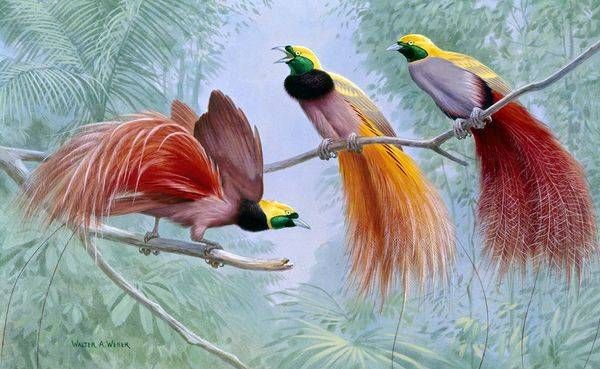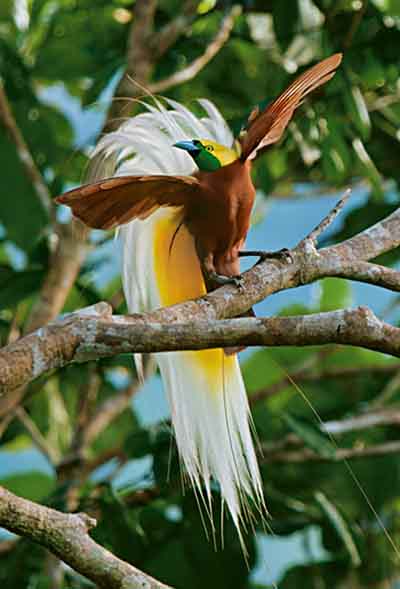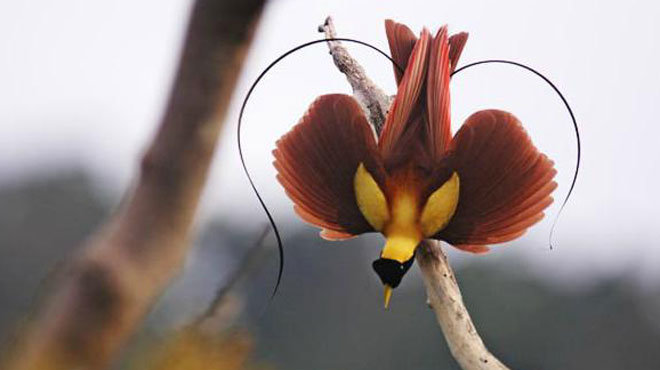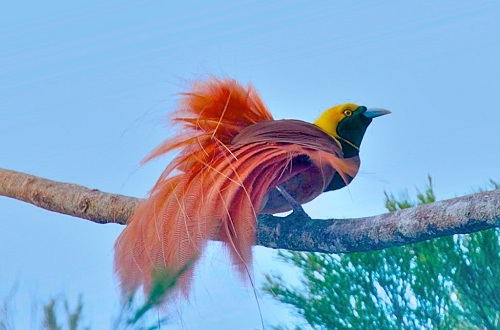“Enchanting Elegance: Unveiling the Allure of Paradise Birds and their Captivating Courtship Displays”

Inhabitants of the Paradisaeidae family, Paradise Birds thrive in Australasia, encompassing the Eastern Indonesian archipelago and the lush landscapes of Vietnam. This family’s most renowned members are undoubtedly the males, bedecked in opulent plumage that they employ to mesmerize females (with more subdued attire) through elaborate dances, graceful wing exhibitions, and entrancing tail movements. The males possess strikingly elongated and intricately adorned tails, with certain species featuring majestic head crests or resplendent wing feathers. Known as one of the oldest avian songsters, Paradise Birds have a lineage tracing back through the annals of history.

One esteemed member of the Paradisaeidae family is the Wilson’s Bird of Paradise (Cicinnurus respublica), which graces the islands of Waigeo and Batanta off the coast of West Papua, Indonesia. Its appearance is unmistakable, presenting an array of deep red, radiant gold, vibrant green, and serene aquamarine hues. Remarkably, the turquoise head crest of the Wilson’s Bird of Paradise boasts bare skin rather than feathers. Accompanying this are two elegantly curving tail feathers, which play a pivotal role in the male’s elaborate courtship spectacle.
Similar to many of their fellow Paradise Birds, it is the male that dons the resplendent attire. Females, by contrast, showcase a modest light brown plumage punctuated by a hint of lush green in their head crests. To captivate the attention of females, males meticulously clear away leaves and debris, fashioning an intricate stage within the natural tapestry of the forest. On this level ground, they perform a captivating ballet, leaping gracefully from branch to branch, striking various poses, unveiling their multi-faceted, iridescent plumage, and issuing forth melodious calls. In their quest to woo the affection of potential mates, they engage in a symphony of movements – head sways, neck arches, tail fanning, and even, on occasion, opening their beaks wide to enchant their chosen partners.
In tandem with these displays, the males take meticulous care in preparing their stage, meticulously tidying leaves and debris to create an enchanting arena nestled within the heart of the forest. Here, they execute their mesmerizing routine, leaping between branches, adopting a myriad of postures, showcasing their resplendent plumage, and filling the air with their resounding and captivating calls.






